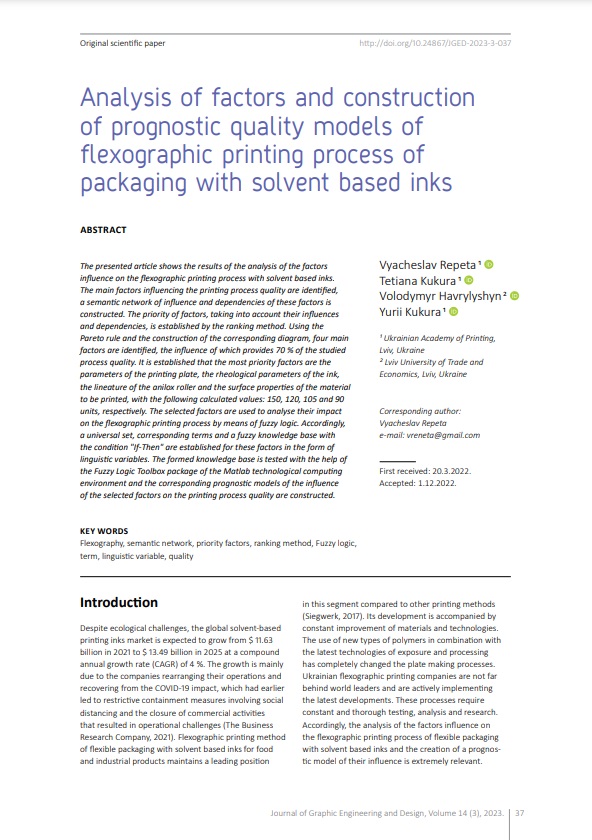Analysis of factors and construction of prognostic quality models of flexographic printing process of packaging with solvent based inks

Published 2023-09-01
abstract views: 137 // Full text article (PDF): 160
Keywords
- Flexography,
- semantic network,
- priority factors,
- ranking method,
- Fuzzy logic
- term,
- linguistic variable,
- quality ...More
How to Cite
Copyright (c) 2023 © 2023 Authors. Published by the University of Novi Sad, Faculty of Technical Sciences, Department of Graphic Engineering and Design. This article is an open access article distributed under the terms and conditions of the Creative Commons Attribution license 3.0 Serbia.

This work is licensed under a Creative Commons Attribution 3.0 Unported License.
Abstract
The presented article shows the results of the analysis of the factors influence on the flexographic printing process with solvent based inks. The main factors influencing the printing process quality are identified, a semantic network of influence and dependencies of these factors is constructed. The priority of factors, taking into account their influences and dependencies, is established by the ranking method. Using the Pareto rule and the construction of the corresponding diagram, four main factors are identified, the influence of which provides 70 % of the studied process quality. It is established that the most priority factors are the parameters of the printing plate, the rheological parameters of the ink, the lineature of the anilox roller and the surface properties of the material to be printed, with the following calculated values: 150, 120, 105 and 90 units, respectively. The selected factors are used to analyse their impact on the flexographic printing process by means of fuzzy logic. Accordingly, a universal set, corresponding terms and a fuzzy knowledge base with the condition "If-Then" are established for these factors in the form of linguistic variables. The formed knowledge base is tested with the help of the Fuzzy Logic Toolbox package of the Matlab technological computing environment and the corresponding prognostic models of the influence of the selected factors on the printing process quality are constructed.
Article history: Received (March 20, 2022); Revised (November 7, 2022); Accepted (December 1, 2022); Published online (September 1, 2023)

